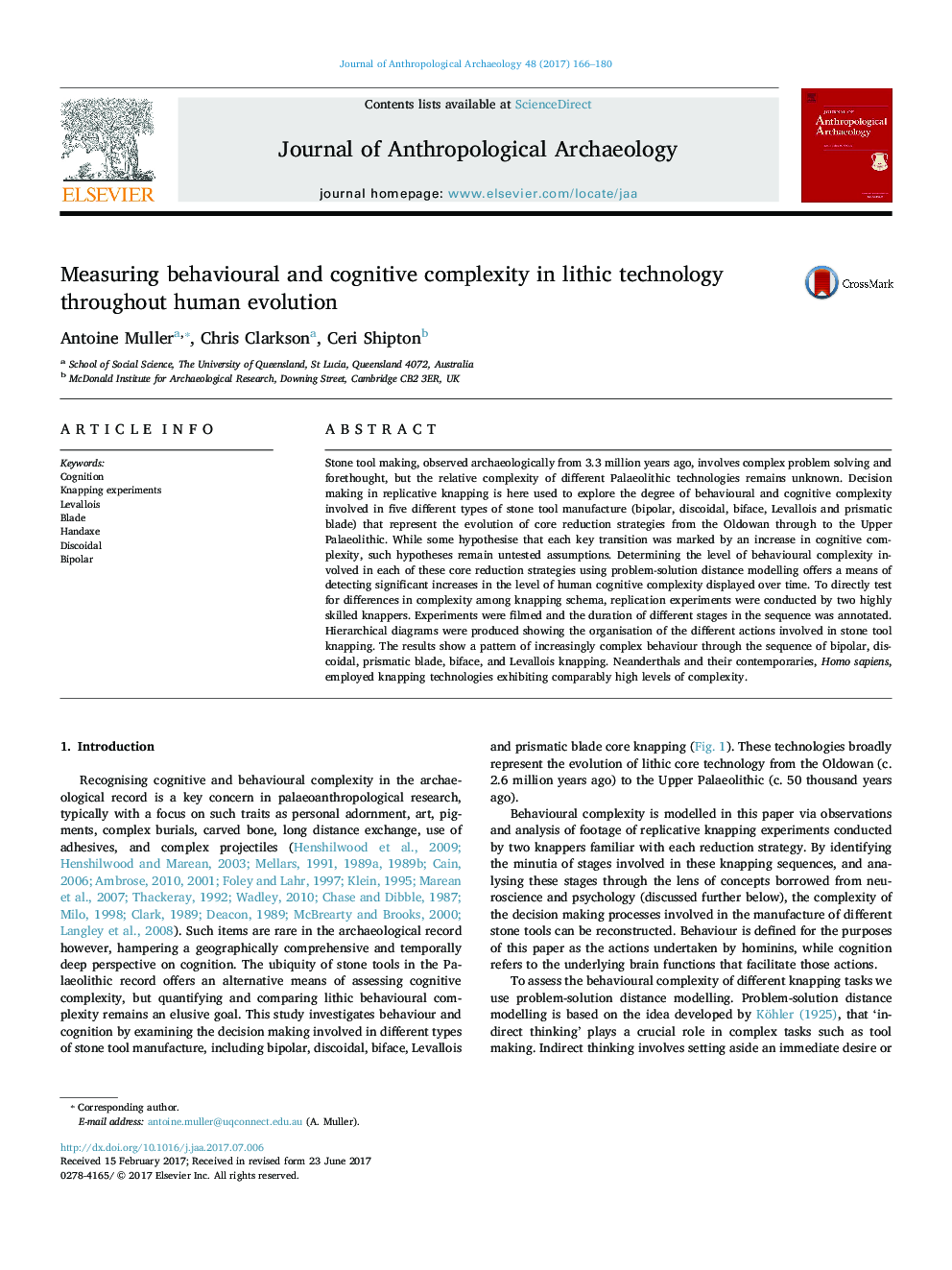| Article ID | Journal | Published Year | Pages | File Type |
|---|---|---|---|---|
| 5111904 | Journal of Anthropological Archaeology | 2017 | 15 Pages |
Abstract
Stone tool making, observed archaeologically from 3.3 million years ago, involves complex problem solving and forethought, but the relative complexity of different Palaeolithic technologies remains unknown. Decision making in replicative knapping is here used to explore the degree of behavioural and cognitive complexity involved in five different types of stone tool manufacture (bipolar, discoidal, biface, Levallois and prismatic blade) that represent the evolution of core reduction strategies from the Oldowan through to the Upper Palaeolithic. While some hypothesise that each key transition was marked by an increase in cognitive complexity, such hypotheses remain untested assumptions. Determining the level of behavioural complexity involved in each of these core reduction strategies using problem-solution distance modelling offers a means of detecting significant increases in the level of human cognitive complexity displayed over time. To directly test for differences in complexity among knapping schema, replication experiments were conducted by two highly skilled knappers. Experiments were filmed and the duration of different stages in the sequence was annotated. Hierarchical diagrams were produced showing the organisation of the different actions involved in stone tool knapping. The results show a pattern of increasingly complex behaviour through the sequence of bipolar, discoidal, prismatic blade, biface, and Levallois knapping. Neanderthals and their contemporaries, Homo sapiens, employed knapping technologies exhibiting comparably high levels of complexity.
Related Topics
Social Sciences and Humanities
Arts and Humanities
History
Authors
Antoine Muller, Chris Clarkson, Ceri Shipton,
